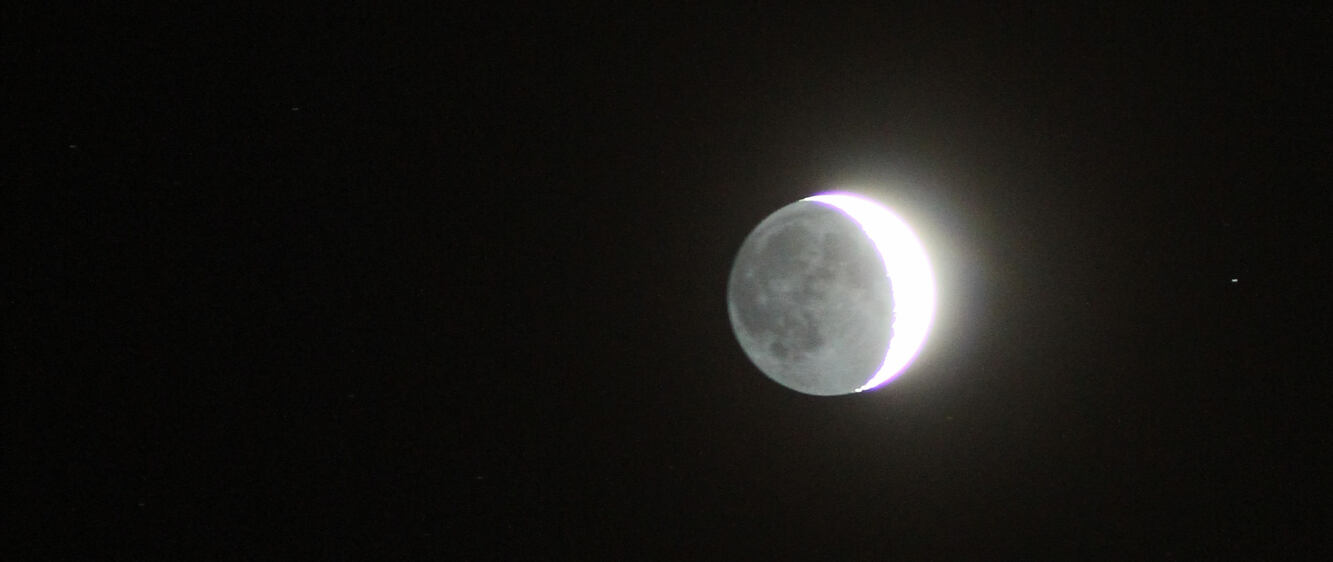
Today's #APOD is a #stunning #picture of M45 / the #Pleaides / the 7 sisters. We use to see M45 with the bright stars dominating the #photography, but this #image is so #sharp that the #stars are small and point-like, which highlight the dust cloud they are illuminating.
But did you know that the cloud is (likely) unrelated with the 7 sisters ?
Messier 45: The Daughters of Atlas and Pleione
Image Credit & Copyright: Stefan Thrun
Read more: https://apod.nasa.gov/apod/ap230105.html
Un artículo interesante en "The Conversation", de César Menor Salván, con un punto de vista realista y sincero acerca de la vida en Marte: "Vida en marte: una realidad incómoda". https://theconversation.com/vida-en-marte-una-realidad-incomoda-195771
Esto me mueve a mí a la escritura,para quien le pueda servir
https://lacienciaparatodos.wordpress.com/2021/07/16/por-que-escribir/
#Astrotourism is booming in the U.S. state of #Utah. The Beehive State attracts more night-sky tourists than almost anywhere else in the world and supports an industry that may be worth billions. The vitality of this business depends strongly on the #DarkSkies of the Colorado Plateau and a growing awareness of the need to protect them.
📷: NPS / Will Pedro
https://www.darkskyconsulting.com/blog/astrotourism-the-special-case-of-utah
Mañana se expone en el @pamplonetario la mano de Irulegi y hay una conferencia científica sobre su hallazgo y estudio. Y ya hoy hay cola para conseguir entradas para la conferencia (la visita de la mano será gratis durante la apertura del centro). Da que pensar, aunque aún no sé muy bien qué en concreto es lo más relevante, o lo más extraño... Un objeto arqueológico de hace dos milenios en el centro del interés social. Esto es Navarra.
https://www.navarra.es/es/-/nota-prensa/cultura-expondra-este-jueves-en-el-planetario-de-pamplona-la-mano-de-irulegi?pageBackId=363032&back=true
🧵 2/2 Phobos over Mars as seen by NASA Viking 1 1977
To estimate which was the visible crater I've used:
Celestia: https://celestia.space/
HSRC (FU Berlin) DLR ESA Map:
https://maps.planet.fu-berlin.de/#map=3/2074498.35/0
Y aquí una noticia más de las que preparo, sobre astronomía, para "Investigación y ciencia". "Un estallido de rayos gamma trastoca la clasificación de esos fenómenos extremos". Una historia científica con reventones estelares, chinos, socilogía de la ciencia y mucho, mucho misterio... https://www.investigacionyciencia.es/noticias/un-estallido-de-rayos-gamma-trastoca-la-clasificacin-de-esos-fenmenos-extremos-21561
Mi noticia astronómica de hoy en "Investigacíon y Ciencia": "Hallan dos nuevos planetas habitables y similares a la Tierra en el entorno solar", https://www.investigacionyciencia.es/noticias/hallan-dos-nuevos-planetas-habitables-y-similares-a-la-tierra-en-el-entorno-solar-21584
"In view of the wealth of
evidence of the negative health consequences of exposure to blue-rich ALAN, ... it is now time for legislation to be introduced to ban the use of blue-rich light sources in public lighting at night."
Three Quarters of Major Observatories Affected by Light Pollution
Search over 1,000 astronomy and space news releases at www.stars-n-stuff.com/news-stories
#astronomy #space #science #news #stargazing
Image: Own work, via Night Cafe Studio
@Homo_viator obrigado. Estava em fila de espera para divulgar aqui , com mais 2 artigos :) Mais um trabalho notável de Fabio Falchi (et al), autor, por exemplo, do Novo Atlas do Brilho do Céu Noturno. Estes alertas servem para os decisores mas também para a comunidade científica mais apática. A situação é muito preocupante. Nunca houve tanta luz na atmosfera. Entramos em caminhos desconhecidos quanto aos impactos nos ecossistemas e, claro, limitamos a observação astronómica.
Publicado un estudio en la revista MNRAS sobre contaminación lumínica en los observatorios astronómicos principales del mundo. Entre los observatorios realmente funcionales (no lugares históricos como Lick, Palomar o Beijing, o instalaciones experimentales para otras cosas como Starfire), Calar Alto es el lugar peor. Recordemos que Andalucía sigue sin normativa de protección del cielo y que en Calar Alto no hay ninguna política ni acción propia sobre este tema. El artículo: https://academic.oup.com/mnras/article/519/1/26/6936422
RASC press release about #LightPollution at the major observatories:
"only 7 of the 28 major astronomical observatory sites have a zenith sky brightness with light pollution below the expected threshold of 1% of natural sky brightness, and so could be considered almost uncontaminated in that direction. This leaves the remaining 21 other major sites – three quarters of all the major observatories – all above this level." https://ras.ac.uk/news-and-press/research-highlights/three-quarters-major-observatories-affected-light-pollution
RT @tuidelescribano@twitter.com
En la década de 1970, una cápsula con Cesio-137 radiactivo se perdió en una cantera de arena. 10 años después terminó en la pared de un edificio de viviendas, matando a varias personas antes de que se pudiera encontrar la fuente. https://en.wikipedia.org/wiki/Kramatorsk_radiological_accident
🐦🔗: https://twitter.com/tuidelescribano/status/1605276868516761600
Stolen from somewhere else... (apologies, lost the original source - there's an "@" but don't know where it's from).
#lightpollution #poluiçãoluminosa
#ChristmasLights #IluminaçãodeNatal
galadi.net -- astrónomo cordobés

